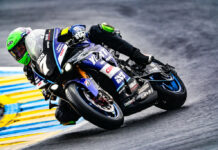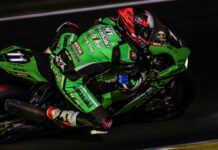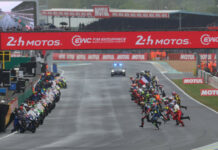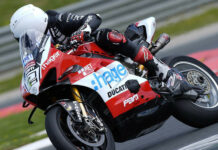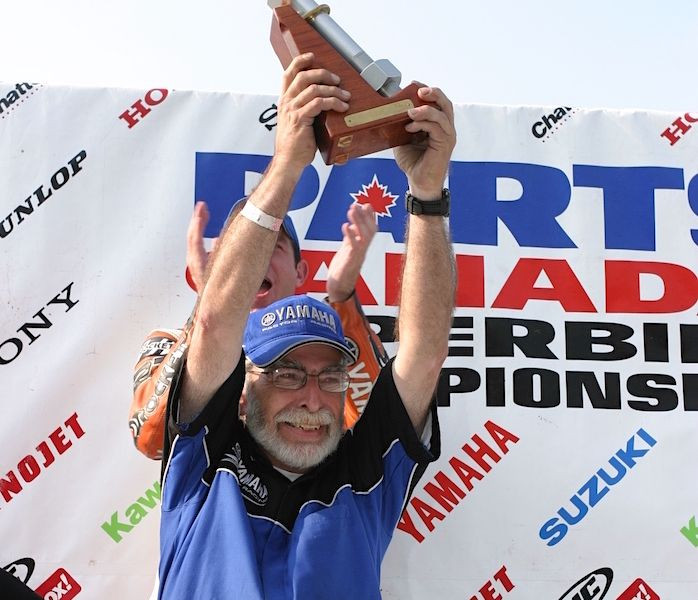Remembering Paul Fournier
Tuner was key for careers of Picotte, Crevier, McCormick and others in CSBK and beyond
Toronto, ON – “The thing I remember first about Paul,” reflects Brett McCormick, who had the late Fournier’s focus while riding for the juggernaut Blackfoot-Picotte works Suzuki program in 2009 and 2010, “was that he always had a smoke in his mouth, weather he was pouring gasoline or building an engine!”
McCormick was reflecting on his time racing for Fournier following the builder’s death on Tuesday, November 16 after a brief illness, and shortly after he was voted into the Canadian Motorcycle Hall of Fame.
A teenager during his time with Fournier, McCormick admits that he learned lots from the famed builder, and that some of it is still sinking in: “When you’re that young, you don’t always see how everything works, and now I would say I more fully appreciate everything Paul was capable of.”
“He was a quiet guy with a wealth of knowledge,” admits McCormick, confirming the remarks of many others who worked for and with Fournier over his lengthy career. “He would talk to you for six hours on a subject, but you had to show an interest, you had to ask.
“For sure he was a hell of an engine man, really understood the rules and the goals in terms of real on track performance. Mostly, he was so calm, but once you were part of his circle, he could show some emotion, but almost always in control.”
Working with the potent Picotte squad in their final version, McCormick says that the crew “operated without really having to talk all that much, and Paul was a big part of that. Once we had a direction, he put his head down and went at it.”
One of McCormick’s favorite memories of that era was after a successful weekend in Calgary, the home of sponsors Blackfoot and Parts Canada. The whole team went to the home of Blackfoot co-owner Pat Chambers for a celebratory meal, prior to flying home the next day.
“Everyone was having fun, obviously the mood was really good,” admits McCormick. “We were getting into the meat of the season, and the crew was really coming together. Part way through the night, Paul picked up a guitar, and just started to shred, singing and playing. If you didn’t already think he was someone special, you knew for sure then.”
This evening probably contributed to a popular paddock in-joke, where Paul was referred to as the “the most interesting man in the world,” due to his resemblance to the actor who played that character in the popular series of Dos Equis beer commercials on television. However, Paul was interesting in more tangible ways, as well.
Much of Picotte’s racing career success was tied to Fournier, who died last week at the age of 75. He is survived by wife Edith and grown daughters Sophie and Chantal, as well as two grandchildren. A celebration of his life will be held in Granby on December 4.
Both Fournier and Picotte were based in Granby, Quebec, south of Montreal, when they met, with action focused at the local Saniar International Road course and drag strip.
Picotte first encountered Fournier at local Yamaha dealer Guy Moto where Paul was a mechanic, having learned the performance trade at the nearby Ford dealer. Fournier helped Picotte star in Amateur action on a Yamaha FZR400 as well as aboard a 350cc two-stroke in the spec Yamaha Cup series.
Soon, 1989 rookie Pro Picotte was showing well in the U.S. and Canada on a Fournier-built, first year FZR600. When the potent Honda CBR600F2 arrived the next year with Honda Canada factory bikes for Rueben McMurter and Yves Brisson, Fournier and Picotte made history by winning on the long straight of Race City in Alberta on the “old technology” Yamaha, surviving a controversial post-race full tear down.
When Picotte made an impressive jump to Superbike as a second year Pro in 1990 with Michel Mercier’s FAST Sunoco Yamaha program, Fournier was Picotte’s primary at-track support. As Picotte worked into the American Superbike program with Ducati, Fournier worked for Alan Labrosse and the Suzuki Canada National squad running Mario Duhamel.
When Picotte moved to the AMA series in the states full time in 1994, Fournier moved to the Muzzy-Kawasaki shop in Colorado but returned after struggling to fit in with the American squad, although he liked owner Rob Muzzy.
Fournier thrived with the new, Dyno-focused Canadian rules, and helped Francis Martin to gain the attention required to pick up a Honda Canada ride.
Fournier also worked with the troubled Klaus Moehrle Suzuki Canada effort, running a wide variety of racers on a shoe-string budget, including Mario Duhamel and Andrew Trevitt. In 1999, Fournier joined works Yamaha racer Linnley Clarke to take the Pro 600 title with the R6.
In the winter of 1999-2000, Honda Canada made it clear they were going all out to stop Kawasaki’s run of nine straight Pro Superbike CSBK Feature class crowns. Two top teams were formed to ride the new, $150,000, HRC provided RC51 twin – one run by Kevin Graham with Jordan Szoke in Ontario and the other handled by Labrosse with Fournier and crew building for Steve Crevier, back from duty in the U.S.
A wild season ensued, and in the end Szoke took the most wins but Crevier earned the first of two consecutive Feature titles. This program was one of the first Canadian “super teams,” Fournier joined at the track by Nick Xenos, Jamie Barklay and eventual Crevier disciple Peter Snell.
In 2003, Fournier rejoined Picotte in the U.S., and led the Bleu Bayou Ducati effort, a strong showing hindered by a Michelin tire development deal. This led Picotte to make a Crevier-style big money return to Canada, his decision to join Yamaha Motor Canada coming at a time when the series moved to more restrictive, Superstock-type rules to encourage closer competition.
The Fournier squad dominated in 2004 and 2005, taking Superbike titles with the R1 and Sport Bike crowns with the R6. Following seasons were hindered by injury, and the Picotte team branched out to successfully run an American development program with the troublesome Buell twin, ridden at times, successfully, by Crevier.
Picotte and Fournier eventually aligned with the Blackfoot Suzuki effort, and when Picotte opted to retire, they initially tried riders Francis Martin, Matt McBride and Chris Peris. After mediocre results, they switched direction and opted to focus solely on new signing McCormick, who staged an epic 2009 campaign battling everywhere, often all-out, with eventual Champ Jordan Szoke’s works Kawasaki.
The severe economic downturn saw Suzuki pull the plug of the Blackfoot-Picotte program, sending McCormick on a quest to keep his career momentum going. The team ran McCormick and Miguel Duhamel on last year’s Suzukis at Daytona to start 2010. After that, Picotte tried his best to get McCormick settled in with the troubled Jordan Suzuki program in the AMA.
More recently, Fournier continued to build potent motorcycle, ATV, auto and especially snowmobile powerplants. He is one of the legendary tuners in the storied history of the CSBK tour, and his efforts with the likes of Canadian National number ones Picotte, Crevier, Clarke and McCormick are just the tip of the Fournier iceberg.


